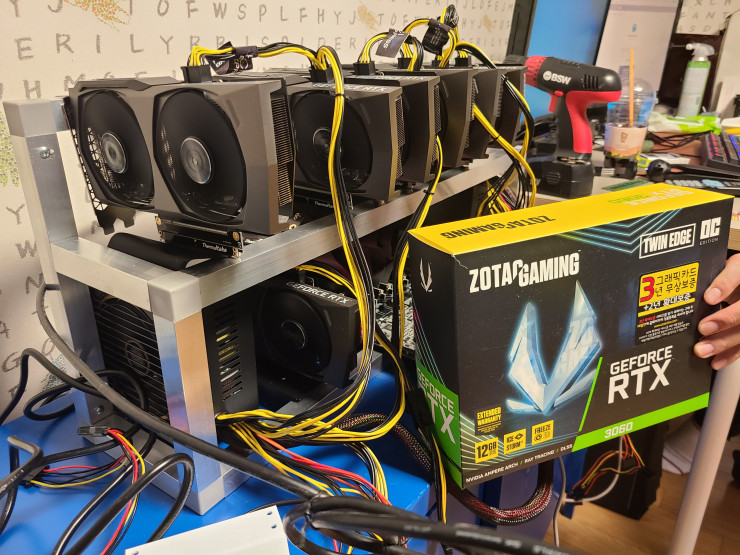It’s true that nothing lasts forever, but Nvidia’s anti-mining limiter on the GeForce RTX 3060 didn’t last long at all. Cryptocurrency miners have circumvented the algorithm in a little over one month since the official announcement.
Intentional or not, Nvidia played a huge role in helping cryptocurrency miners crack the anti-mining limiter. The chipmaker released a GeForce beta driver that partially disabled the algorithm, and everything just went downhill afterwards. Some may argue that it was just a matter of time before cryptocurrency miners figured out a solution, but the driver was pivotal for bypassing the limiter.
Nvidia had immediately removed the GeForce driver, but it’s the Internet so nothing really disappears for good. With the GeForce driver in hand and some cheap HDMI dummy plugs, mining on multiple GeForce RTX 3060 graphics cards was possible once again. Figuring a way to mine with more than four graphics cards was the last piece to the puzzle.
To make a long story short, the anti-mining mechanism essentially runs two checks: if the GeForce RTX 3060 is running on a PCIe 3.0 x8 expansion slot and if a display is connected to the Ampere graphics card. Since you can fool the latter with HDMI dummy plugs, the only thing missing is to find a motherboard with a generous amount of PCIe 3.0 x8 expansion slots.
A user from Quasar Zone successfully put together a 7-way GeForce RTX 3060 mining rig. Collectively, the seven Zotac Gaming GeForce RTX 3060 Twin Edge OC were delivering a hash rate up to 337 MH/s. According to the user, his setup was pulling around 1,020W of power from the wall. It’s impossible to install more than four graphics cards on a motherboard. Therefore, the user employed PCIe 3.0 x16 riser cables to connect the graphics cards to the motherboard, while mounting them on a rack. The owner didn’t reveal which motherboard or processor he’s using for his mining operation.
Contrary to popular belief, many motherboards offer a plethora of PCIe 3.0 x16 expansion slots, since the usage of PLX chips is pretty common nowadays. Just to name some examples, the Asus P9X79-E WS, X99-E WS and ASRock X79 Extreme11 are equipped with seven PCIe 3.0 x16 expansion slots. Or, if you want more modern offerings, the Asus WS X299 Sage and Gigabyte X299-WU8 are valid options as well.
Cryptocurrency mining doesn’t require one of the best CPUs, which is why miners favor old-gen platforms that are dirt cheap. The biggest challenge now is finding these outdated motherboards. Of course, there’s also the alternative where you can pick up an enterprise motherboard with a cheap Xeon chip and call it a day.
If you’re interested in mining, check out our list of best mining GPUs and our advice on how to optimize your GPU for Ethereum mining.
